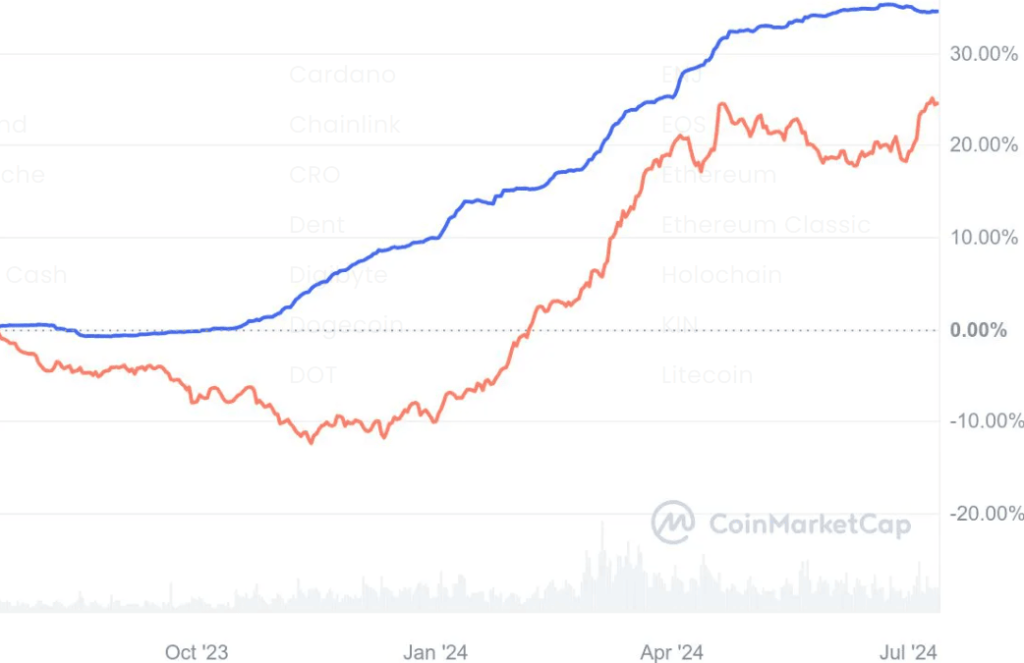Due to the EU’s MiCA regulations, centralized exchanges had to modify their product portfolios for EU-based users, excluding stablecoins like Tether (USDT) and DAI.
Currently, Europe leads crypto activities, which account for more than 17% of global transactions; using USDC may affect US markets due to its strong regulatory standing under Circle’s token.
USDC issuance increased after the June upgrade
Despite USDT’s longstanding dominance, recent data shows a subtle shift: There was no significant movement in the supply of USDT, which remained at 112 billion tokens last month. USDC expanded by 1.7 billion tokens in the past two weeks.

USDC’s expansion is through the Base blockchain using Coinbase, and it has surpassed $2.9 billion of USDC in its DEX, DeFi, and gaming verticals. The base also offers bridged USDC and has had its own USDC since September of 2023, which has improved the overall usability of the ecosystem.
USDC is a payment vehicle in the fintech sector and remains on Algorand, unlike Tether. Due to multiple minting, the USDC balance on Algorand increased by more than 450% in June.
USDT continues to be healthy, with more than 50% of its total circulation on the TRON network and a dominant share on the Ethereum network. Bridging mechanisms have helped move about $5 billion worth of USDT to L2 scaling chains. Furthermore, USDT promotes native initiatives for development in the Telegram environment, investing approximately $600 million in tokens during the second quarter.
Now, Binance integrates USDC for its futures trading products.
However, Tether’s (USDT) effects on futures trading products were significant, with ordinary users able to save, trade, and perform spot trading transactions with USDT. USDT volumes continued at around $53 billion daily, whereas the volumes for USDC rose to around $10 billion, mostly seen at $5 billion daily.
Binance has started implementing its USDC strategy, while Circle has focused on obtaining regulatory approval for its stablecoin. It is worth noting that Tether USDT products have been relisted on Binance with USDC pairs, and non-compliant tokens are limited to spot only.
As the second-largest issuer of USDT, holding about 33% of the total supply, USDC is ready for increased usage across the industry, especially with the help of Binance. It also brings additional security measures through Circle’s token-free freezing when integrated into decentralized exchanges.
USDC can now be seen in the latest trading pair on Binance, including trading ZRO/USDC in LayerZero’s airdrop token offering and encouraging the use of USDC with zero-fee trading.
OKX tops the exchange in the number of new USDC listings after Binance transferred its Secure Assets Fund to USDC in mid-April. However, the use of regulated stablecoins such as USDC might take a long to popularize due to the continued usage of Tether USDT under relatively fewer regulations across the globe.
The EU’s MiCA regulation requires stablecoins to sustain reliably, liquid, and reserve assets segregated from the rest of the organization’s assets, unlike fully collateralized USDC or Tether’s US government bonds. According to the EU, Tether’s reserves do not yet qualify for an official token under these regulations.

